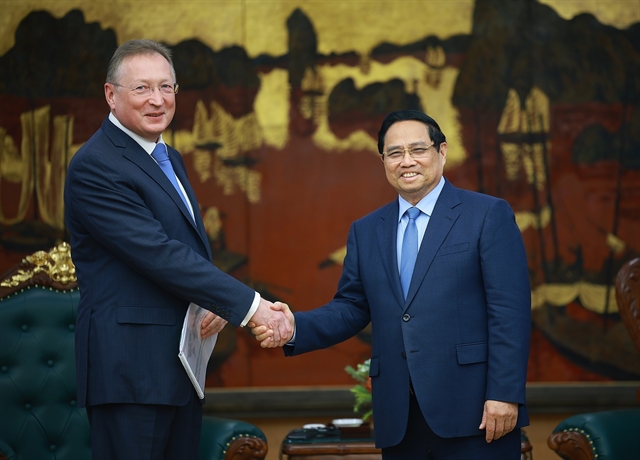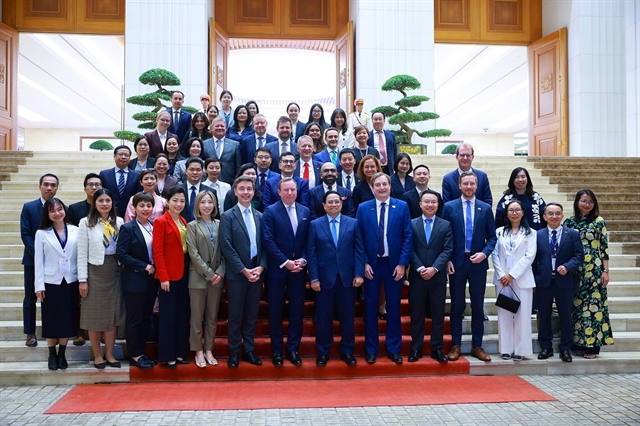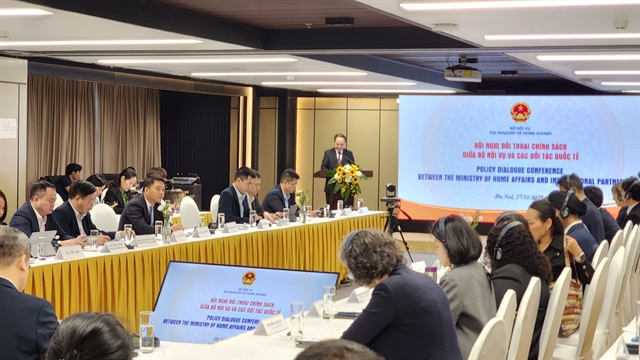 Economy
Economy

 |
| Foreign tourists visit old quater in Hà Nội city. Tourism will be a key one in 2023. — VNA/VNS Photo Minh Quyết |
HÀ NỘI - Despite slowing trade, there are still pockets of resilience in Việt Nam’s economy. Tourism will be a key one in 2023, HSBC said in a report.
In its Vietnam at a glance report on tourism to the partial rescue released early this week it said Việt Nam’s domestic tourism had been roaring, but international tourism, which historically accounted for 60 per cent of tourism receipts, saw a tepid recovery. That said, there were good reasons to expect a more meaningful recovery, in particular after China’s reopening, a 50-80 per cent return of Chinese tourists could be achievable.
Following Việt Nam’s re-opening last March, its domestic tourism had been roaring, with Việt Nam easily surpassing its 2022 target of 60m and recording over 100m tourists. Meanwhile, Việt Nam welcomed 3.6m international tourists in 2022, mainly driven by travellers from South Korea (26 per cent) and the US (9 per cent).
However, the rebound of international tourism was only partial, with tourist arrivals reaching 3.6 million, only 20 per cent of 2019’s level. This highlights notable room for the services sector to continue to flourish amid a global slowdown of trade in goods demand, according to the report. For 2023, the government is targeting 102m domestic tourists and 8m international visitors, with tourism receipts expected to rise more than 30 per cent, albeit still lower than 2019 levels. Recall that total tourism receipts were as high as 10 per cent of GDP in 2019.
The good news is that mainland China, the largest visitor base for Việt Nam prior to the pandemic , has also recently begun its re-opening process, adding further tailwinds to Việt Nam’s burgeoning tourism sector. While the recovery process may be gradual, the impact on tourism Việt Nam’s economy will be sizeable on many metrics. For instance, Chinese tourists have on average historically spent more and stayed longer than most Asian peers, though lagging behind European and American peers. Given the proportion of Chinese tourists (30 per cent share), Việt Nam will likely be another main regional beneficiary, just after Thailand, to receive a boost from the return of Chinese tourists. If flight constraints can be solved and visa entry requirements can be eased further, we believe a 50-80 per cent return of Chinese tourists (3 million to 4.5 million) from pre-pandemic level could be achievable.
In addition to China’s re-opening, what other possible boosts are there? For one, expansion into new markets will be an area of focus, with various initiatives such as tourism roadshows being conducted to make headway into emerging markets like India, a country with a rising presence in Việt Nam’s international tourism.
Just last September, VietJet commenced operating flight routes between Việt Nam’s resort island Phú Quốc and India’s New Delhi and Mumbai. Other routes have also been launched connecting the two countries’ major cities. Indeed, easier travel has also planted the seeds to deeper tourism connections: Indian tourists accounted for 4 per cent of Việt Nam’s total tourists in 2022, from just 1 per cent in 2019 (Chart 4).
Another way to facilitate tourism is not just by improving its traditional infrastructure, but also diversifying tourism products. Sports tourism, a subset of tourism included in the tourism industry vision from the Vietnam National Administration of Tourism (VNAT), could also help attract high-spending travellers. For example, Hà Nội has been aiming to become a leading destination for golf tourism. Granted, the relatively nascent market means that there is significant room to improve in terms of the package tour arrangements and coordination among service providers. This, however, provides a good opportunity, with expectations that the number of golf courses in Việt Nam likely to double to 200 by 2025. Alongside other subareas identified such as medical and agricultural tourism, related development projects will be key in supporting the world’s interest to travel to Việt Nam.
General tourism facility developments are also encouraging. In particular, the supply of high-end accommodations continues to grow, with the number of 4-5 star accommodations rising 12 per cent per annum on average pre-pandemic, according to VNAT. Post-pandemic, a number of global chains have been looking to actively expand their portfolios in Việt Nam, reflecting the country’s attractiveness in areas beyond manufacturing. For example, La Festa Phú Quốc, Curio Collection by Hilton is expected to open in mid-2023, and Marriott International is also expecting to add up to 9,000 rooms to its current capacity of 3,300 rooms. With government ambitions and various development projects in play, the structural outlook for international tourism in Việt Nam remains positive, according to the report. — VNS




